Life Cycle Assessment of Dispersed Phase Change Material Heat Accumulators for Cooperation with Buildings in the District Heating System
Abstract
1. State of Art
1.1. Introduction
1.2. Methods of Selection of PCM Heat Accumulators
1.3. LCA of Heat Storage
2. Methodology
- the electricity consumed in the production phase of individual materials included in the heat storage was entirely produced in the country of the producer of these products;
- the heat exchanger was made of primary metallurgical copper;
- metallurgical copper was produced from ores; poor copper sulfides enriched by flotation give the so-called concentrates which are roasted and smelted; the obtained intermediate is directed to the converter processes and electrolytic refining; the last stage of copper production is smelting, casting, and shaping;
- the PCM heat accumulator thermal insulation was made of mineral wool which was produced from raw materials of mineral origin (basalt, gabbro, dolomite, and bauxite) in the shaft furnace melting, fiberizing, and polymerization processes;
- the tank housing was made of stainless steel;
- the average route of railway transport of metallurgical copper and steel to the plant, where the tank elements are formed, was 300 km; rail transport consumed approx. 1.58 × 10−3 MJ/kg/km of electricity;
- the finished semi-finished products were transported by road to a warehouse manufacturer from a distance of 30 to 1500 km; the energy consumption in fuel by the car was about 3.14 × 10−4 MJ/kg/km.
2.1. Methodology of Determination of Input Data of the Heating Substation
2.2. Methodology of Determination of Theoretical Potential of Heat Storage
2.3. Methodology of PCM Selection
2.4. Methodology of Determination of Technical Potential of Heat Storage and Methodology of Selection of the PCM Heat Accumulator
2.5. Methodology of Determination of the Effects of Use Dispersed PCM Heat Accumulators in DHS
2.6. LCA Methodology
3. Standardization of the Selection of Dispersed PCM Heat Accumulators for Cooperation with Buildings in the DHS
3.1. Determination of Input Data of the Heating Substation
3.2. Determination of Theoretical Potential of Heat Storage
3.3. PCM Selection
3.4. Determination of Technical Potential of Heat Storage and Selection of PCM Heat Accumulator
3.5. Effects of Use Dispersed PCM Heat Accumulators in DHS
3.6. LCA of Dispersed PCM Heat Accumulators
4. Conclusions
- The most important period of the heating season from the point of view of heat storage is its peak, beginning, and end. The increases in the average, hourly potential of heat storage were in the range of dΔQi,10% = 26 × 10−5 to dΔQi,50% = 128 × 10−5 (GJ/h)/1 kW for the amount of heat not used by the building, ΔQi, within 10–50%.The increases in the monthly potential of heat storage, dΔQi,av, ranged from 0.06 to 1.24 (GJ/m-c)/1 kW of the source’s heat output.
- In the proposed standardization method, the range of the most common return water temperature values of 44 °C to 54 °C was consistent with the operating data. The temperature range accounted for 60% of the duration of the heating season. The values for relative characteristics, for the standard season, are considered safe values, which means that in the case of the actual operation they will be only more favorable (it should be above 60%).
- For the analyzed return water temperature ranges from 44 °C to 54 °C, the best fit was PCM—salt hydrate—hydrated sodium trisulfate, Na2S2O3·5H2O, which obtained 170 points and paraffin, with the number of carbon atoms from 22 to 25, which obtained 162 points. The paraffin with a carbon number of 25 has the most preferred phase change temperature of 49.4 °C. Therefore, it can be concluded that the selection of PCM can be performed for standard season conditions.
- For the proposed standardization method, the technical potential of heat storage value, %ΔQi,st, was from 49.4% to 59.6% of the theoretical potential of heat storage. The increases in the active volume of PCM heat accumulator, dVPCM, and the mass of the required amount of PCM, dmst, were, respectively, 0.8 × 10−2–4.0 m3/kW and 1.3–6.7 × 10−2 kg/kW.
- The use of the PCM heat accumulator allows for regulating the heat loss on the return, reducing the temperature of the water returning from the heating substation, and regulating this temperature almost to the design values. The difference of the average values of return water temperatures, ΔT2i,st,av, from the design value after the application of the PCM heat accumulator was only 2.5 K for the proposed selection method. Before the application of the PCM heat accumulator, this difference was ΔT2i,av = 7.15 K.
- Maintaining the heating network return water temperature at a constant level and storing the excess heat contributes to the improvement of the efficiency of the entire DHS. The proposed solution allowed the efficiency of the DHS to increase by 16 percentage points. Thanks to the dispersed heat storage, compared to the variant without heat storage, an increase in system efficiency by 41% was achieved.
- There is a general belief that systems with renewable or unconventional energy sources are minimally invasive to the environment. The analyses presented in this article have shown that such solutions have an impact on the environment. The conducted LCA analysis of heat storage technology with the use of PCM showed a significant impact of all stages of the life cycle of the analyzed technology on the environment. Without taking into account the improvement in DHS efficiency resulting from the operation of PCM heat accumulators, the LCA analysis indicated negative environmental effects for both PCM in the form of paraffin and salt hydrate. The Eco-indicator values resulting from the use of paraffin are less favorable for the environment than the values for salt hydrate by 65%. This is mainly due to the production process and everything related to it, i.e., the extraction of natural resources and their processing.
- Although PCMs have a negative impact on the environment during the production process, this impact can be reduced. After taking into account the beneficial effects of dispersed PCM heat accumulators for cooperation with buildings in the DHS, negative Eco-indicator values are achieved, which means a positive environmental impact. These values ranged from −0.504 × 10−2 kPt/kW to −2.385 × 10−2 kPt/kW for paraffin and from −1.55 × 10−2 kPt/kW to −6.44 × 10−2 kPt/kW for salt hydrate with the amount of heat not used by the building, ΔQi, within 10–50%. The reduction in the environmental impact corresponded to the increase in the technical potential of heat storage during the operation of the system. The conducted research confirmed that PCMs are beneficial throughout the life cycle for heat storage in DHS.
Author Contributions
Funding
Institutional Review Board Statement
Informed Consent Statement
Data Availability Statement
Acknowledgments
Conflicts of Interest
Nomenclature
| cp | specific heat (J/(kg K)) |
| DHS | district heating system |
| d | increase, (–) |
| ELCD | European Platform on Life Cycle Assessment |
| H | amount of heat of phase change (J/kg) |
| L | length (m) |
| LCA | life cycle assessment |
| LCI | data collection for analysis |
| LCIA | assessment of the environmental impact of the technology |
| m | weight, (kg) |
| mass flow (kg/s) | |
| PCM | phase change material |
| Pt | value of Eco-indicator points |
| Q | heat (J/a) |
| thermal power (W) | |
| q | unitary thermal power (W/m) |
| S1, S2 | scenarios of waste management |
| T | temperature (K) |
| t | temperature (°C) |
| V | volume (m3) |
| Greek symbols | |
| Δ | difference |
| Φ | thermal load of building (W) |
| η | efficiency, % |
| ρ | density (kg/m3) |
| τ | time (s) |
| φ | relative heat demand (–) |
| ϵ | belongs to the set |
| < ; > | closed set on both sides |
| Subscripts | |
| av | average |
| d | distribution |
| e | external |
| ex | exploitation |
| g | generation |
| i | installation |
| int | internal |
| l | liquid |
| m | exponent of the characteristic |
| n | network |
| non | without |
| p | paraffin |
| proj | design values that should be achieved |
| red | reduction |
| s | solid |
| sh | salt hydrate |
| st | storage |
| tot | total |
| v1, v2 | variant 1, variant 2 |
| 1 | supply |
| 2 | return |
| 24 h | twenty-four hours |
| (−20 °C) | minimal design external air temperature |
References
- Brum, M.; Erickson, P.; Jenkins, B.; Kornbluth, K. A comparative study of district and individual energy systems providing electrical-based heating, cooling, and domestic hot water to a low-energy use residential community. Energy Build. 2015, 92, 306–312. [Google Scholar] [CrossRef]
- Turski, M.; Sekret, R. Conceptual adsorption system of cooling and heating supplied by solar energy. Chem. Process. Eng. 2016, 37, 293–304. [Google Scholar] [CrossRef][Green Version]
- Energy Efficiency Act of 20 May 2016 as Implementation of Directive (EU) 2018/2002 of the European Parliament and of the Council of 11 December 2018 Amending Directive 2012/27/EU on Energy Efficiency; Official Journal of the European Union: Brussels, Belgum, 2018.
- Wojdyga, K.; Chorzelski, M.; Rozycka-Wronska, E. Emission of pollutants in flue gases from Polish district heating sources. J. Clean. Prod. 2014, 75, 157–165. [Google Scholar] [CrossRef]
- Köfinger, M.; Basciotti, D.; Schmidt, R.R.; Meissner, E.; Doczekal, C.; Giovannini, A. Low temperature district heating in Austria: Energetic, ecologic and economic comparison of four case studies. Energy 2016, 110, 95–104. [Google Scholar] [CrossRef]
- Turski, M. Eco-development aspect in modernization of industrial system. E3S Web Conf. 2018, 44, 181. [Google Scholar] [CrossRef]
- Turski, M.; Sekret, R. The Need to Reorganize District Heating Systems in the Light of Changes Taking Place in the Building Sector. Rynek Energy 2015, 119, 27–34. Available online: https://www.cire.pl/pliki/2/04sekretturskirec15.pdf (accessed on 20 June 2022).
- Turski, M.; Sekret, R. New Solutions for Hybrid Energy Supply Systems of Buildings. Rynek Energy 2016, 122, 66–74. Available online: https://www.cire.pl/pliki/2/10turskisekretrec15.pdf (accessed on 20 June 2022).
- Lund, H.; Werner, S.; Wiltshire, R.; Svendsen, S.; Thorsen, J.; Hvelplund, F.; Mathiesen, B. 4th Generation District Heating (4GDH) Integrating smart thermal grids into future sustainable energy systems. Energy 2014, 68, 1–11. [Google Scholar] [CrossRef]
- Lundström, L.; Wallin, F. Heat demand profiles of energy conservation measures in buildings and their impact on a district heating system. Appl. Energy 2016, 161, 290–299. [Google Scholar] [CrossRef]
- Turski, M.; Sekret, R. Distribution and forecast of air temperature in determining of heat output of the district heating substation with heat storage. E3S Web Conf. 2019, 116, 94. [Google Scholar] [CrossRef]
- Nogaj, K. Possibilities of Dispersed Heat Storage in a Heating System through the Use of Solar House Technology; Scientific Works; University of Economics: Wrocław, Poland, 2016; Volume 461, pp. 157–169. [Google Scholar]
- Cholewa, T.; Siuta-Olcha, A.; Balaras, C.A. Actual energy savings from the use of thermostatic radiator valves in residential buildings—Long term field evaluation. Energy Build. 2017, 151, 487–493. [Google Scholar] [CrossRef]
- Cholewa, T.; Balen, I.; Siuta-Olcha, A. On the influence of local and zonal hydraulic balancing of heating system on energy savings in existing buildings—Long term experimental research. Energy Build. 2018, 179, 156–164. [Google Scholar] [CrossRef]
- Nogaj, K.; Turski, M.; Sekret, R. The Use of Substations with PCM Heat Accumulators in District Heating System. MATEC Web Conf. 2018, 174, 1002. Available online: https://www.e3s-conferences.org/articles/e3sconf/abs/2018/19/e3sconf_eko-dok2018_00181/e3sconf_eko-dok2018_00181.html (accessed on 20 June 2022). [CrossRef]
- Nogaj, K.; Turski, M.; Sekret, R. The Influence of Using Heat Storage with PCM on Inlet and Outlet Temperatures in Substation in DHS. E3S Web Conf. 2017, 22, 124. Available online: https://www.e3s-conferences.org/articles/e3sconf/pdf/2017/10/e3sconf_asee2017_00124.pdf (accessed on 20 June 2022). [CrossRef]
- Ferla, G.; Caputo, P. Biomass district heating system in Italy: A comprehensive model-based method for the assessment of energy, economic and environmental performance. Energy 2022, 244, 123105. [Google Scholar] [CrossRef]
- Faninger, G. Active Solar Heating: Water. Sustainable Solar Housing: Exemplary Buildings and Technologies; EARTHSCAN: London, UK; Sterling, VA, USA, 2004. [Google Scholar]
- Bruno, F.; Belusko, M.; Liu, M.; Tay, N.H.S. Using solid-liquid phase change materials (PCMs) in thermal energy storage systems. In Advances in Thermal Energy Storage Systems; Woodhead Publishing: Sawston, UK, 2015; pp. 201–246. [Google Scholar] [CrossRef]
- Turski, M.; Sekret, R. Buildings and a district heating network as thermal energy storages in the district heating system. Energy Build. 2018, 179, 49–56. [Google Scholar] [CrossRef]
- Sayegh, M.; Danielewicz, J.; Nannou, T.; Miniewicz, M.; Jadwiszczak, P.; Piekarska, K.; Jouhara, H. Trends of European research and development in district heating technologies. Renew. Sustain. Energy Rev. 2017, 68, 1183–1192. [Google Scholar] [CrossRef]
- Jiang, X.S.; Jing, Z.X.; Li, Y.Z.; Wu, Q.H.; Tang, W.H. Modelling and operation optimization of an integrated energy based direct district water-heating system. Energy 2013, 64, 375–388. [Google Scholar] [CrossRef]
- Castell, A.; Sole, C. Design of latent heat storage systems using phase change materials (PCMs). In Advances in Thermal Energy Storage Systems; Woodhead Publishing: Sawston, UK, 2014; pp. 285–305. [Google Scholar]
- Basakayi, J.K.; Storm, V.V. Potential use of phase change materials with reference to thermal energy systems in South Africa. Int. J. Adv. Eng. Technol. 2014, 7, 692–700. [Google Scholar]
- Kenisarin, M.; Mahkamov, K. Salt hydrates as latent heat storage materials: Thermophysical properties and costs. Sol. Energy Mater. Sol. Cells 2016, 145, 255–286. [Google Scholar] [CrossRef]
- Trogrlic, M. Analysis and Design of Systems for Thermal-Energy Storage at Moderate Temperatures Based on Phase Change Materials (PCM); Norwegian University of Science and Technology: Trondheim, Norway, 2014. [Google Scholar]
- Guoa, X.; Shu, H.; Gao, J.; Xu, F.; Cheng, C.; Sun, Z.; Xu, D. Volume design of the heat storage tank of solar assisted water source heat pump space heating system. Procedia Eng. 2017, 205, 2691–2697. [Google Scholar] [CrossRef]
- Turski, M.; Nogaj, K.; Sekret, R. The use of a PCM heat accumulator to improve the efficiency of the district heating substation. Energy 2019, 187, 115885. [Google Scholar] [CrossRef]
- Zsembinszki, G.; Fernández, A.G.; Cabeza, L.F. Selection of the appropriate phase change material for two innovative compact energy storage systems in residential buildings. Appl. Sci. 2020, 10, 2116. [Google Scholar] [CrossRef]
- Jachura, A.; Sekret, R. Life Cycle Assessment of the Use of Phase Change Material in an Evacuated Solar Tube Collector. Energies 2021, 14, 4146. [Google Scholar] [CrossRef]
- Fong, A.D.; Miller, C.W. Efficiency of paraffin wax as a thermal energy storage system. In Proceedings of the International Solar Energy Society, Annual Meeting, Orlando, FL, USA, 6–10 June 1977; Section 16. pp. 6–10. [Google Scholar]
- Johansson, E.; Norrman, F. Life Cycle Analysis on Phase Change Materials for Thermal Energy Storage. Master’s Thesis, KTH School of Industrial Engineering and Management, Stockholm, Sweden, 2019; p. 329. [Google Scholar]
- Lamnatou, C.; Motte, F.; Notton, G.; Chemisana, D.; Cristofari, C. Cumulative energy demand and global waming potential of a building-integrated solar thermal system with/without phase change material. J. Environ. Manag. 2018, 212, 301–310. [Google Scholar] [CrossRef]
- Gracia, A.; Rincóna, L.; Castell, A.; Jiménez, M.; Boer, D.; Medranoa, M.; Cabeza, L.F. Life Cycle Assesment of the inclusion of phase change materials (PCM) in experimental buildings. Energy Build. 2010, 2, 1517–1523. [Google Scholar] [CrossRef]
- OrĂł, E.; Gil, A.; Gracia, A.; Boer, D.; Cabeza, L.F. Comparative life cycle assesment of thermal energy storage for solar power plants. Renew. Energy 2012, 44, 166–173. [Google Scholar] [CrossRef]
- Nienborg, B.; Gschwander, S.; Munz, G.; Fröhlich, D.; Helling, T.; Horn, R.; Weinläder, H.; Klinker, F.; Schossig, P. Life cycle assesment of thermal energy storage materials and components. Energy Procedia 2018, 155, 111–120. [Google Scholar] [CrossRef]
- Abhat, A. Low temperature latent heat thermal energy storage: Heat storage materials. Sol. Energy 1983, 30, 313–332. [Google Scholar] [CrossRef]
- Abhat, A. Short term thermal energy storage. Rev. Phys. Appl. 1980, 15, 477–501. [Google Scholar] [CrossRef]
- PN-EN ISO 14040:2009; Environmental Management. Life Cycle Assessment. Principles and Structure. Polish Committee for Standardization Publishing: Warsaw, Polish, 2009.
- PN-EN ISO 14044:2009; Environmental Management. Life Cycle Assessment. Requirements and Guidelines. Polish Committee for Standardization Publishing: Warsaw, Poland, 2009.
- Du, K.; Calautit, J.; Wang, Z.; Wu, Y.; Liu, H. A review of the applications of phase change materials in cooling, heating and power generation in different temperature ranges. Appl. Energy 2018, 220, 242–273. [Google Scholar] [CrossRef]
- Frischknecht, R.; Jungbluth, N. Overview and Methodology; Ecoinvent Center: Dübendorf, Switzerland, 2007; Available online: https://inis.iaea.org/collection/NCLCollectionStore/_Public/41/028/41028087.pdf?r=1 (accessed on 20 June 2022).
- Ecoinvent. For the Availability of Environmental Data Worldwide. Available online: https://ecoinvent.org/ (accessed on 20 June 2022).
- Dreyer, L.C.; Niemann, A.L.; Hauschild, M.Z. Comparison of Three Different LCIA Methods: EDIP97, CML2001 and Eco-indicator 99: Does it matter which one you choose? Int. J. Life Cycle Assess. 2003, 8, 191–200. [Google Scholar]
- PRé Sustainability. SimaPro Database Manual—Methods Library; PRé Sustainability: Amersfoort, The Netherlands, 2016; Available online: https://simapro.com/wp-content/uploads/2020/10/DatabaseManualMethods.pdf (accessed on 20 June 2022).
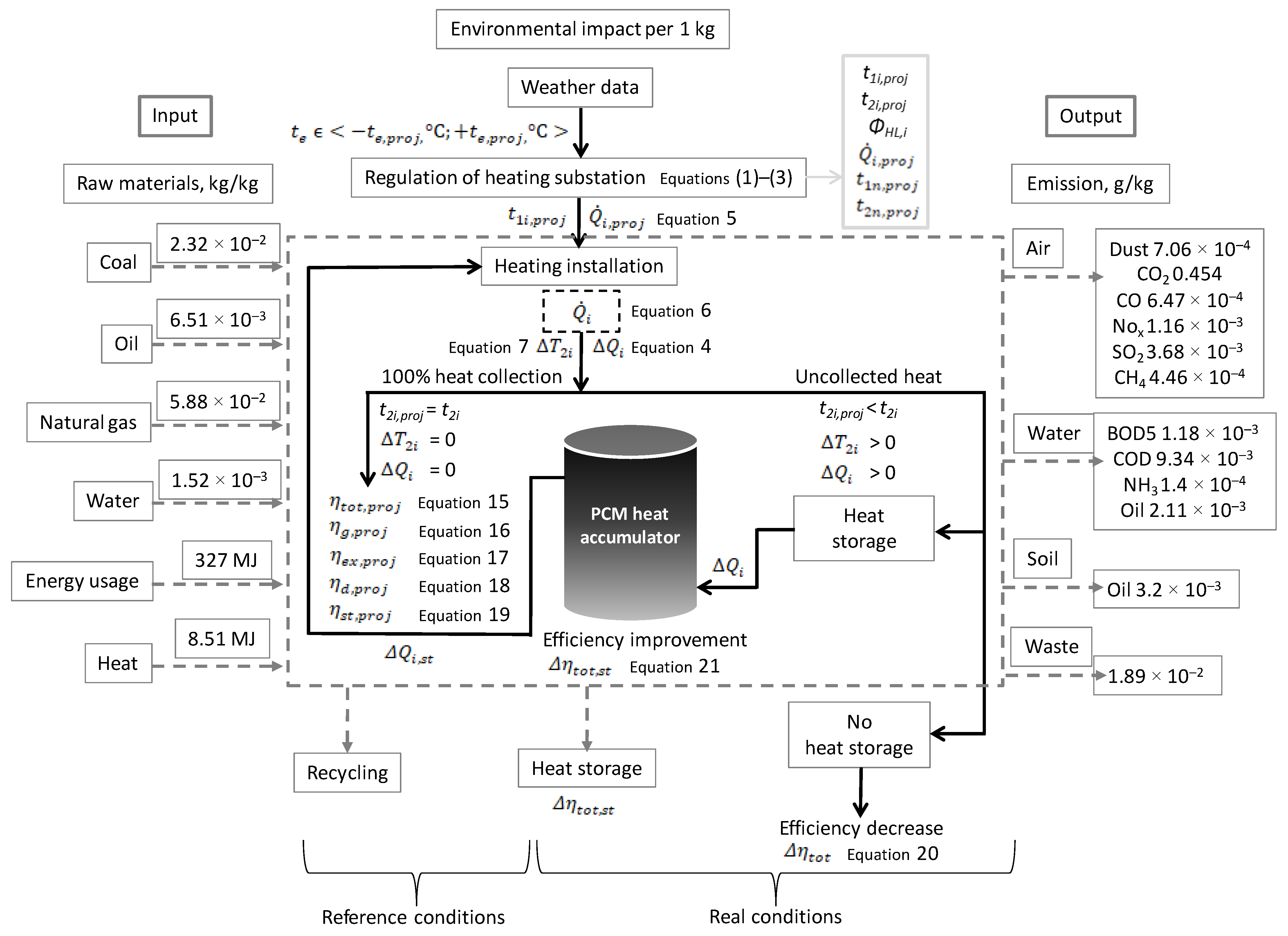
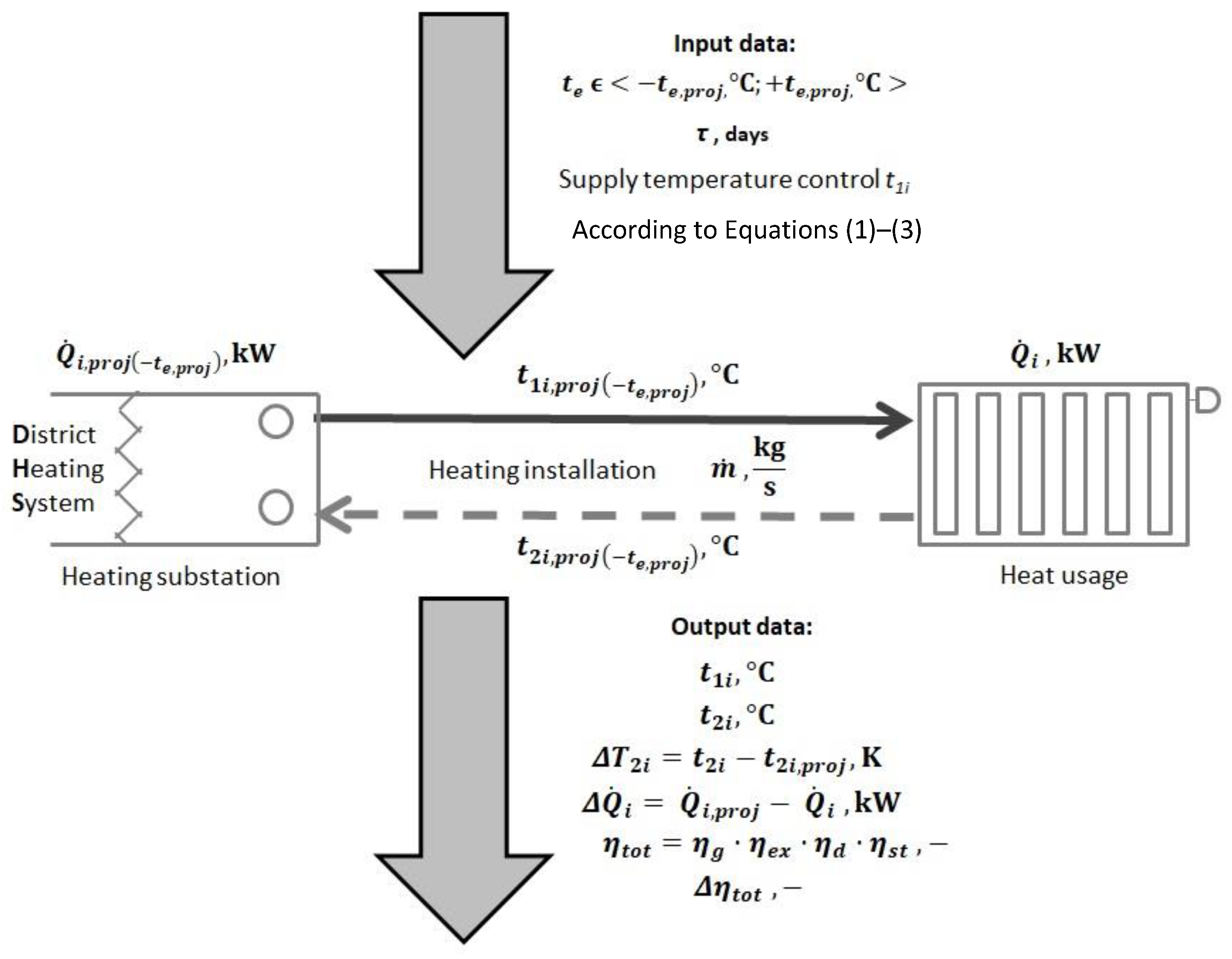

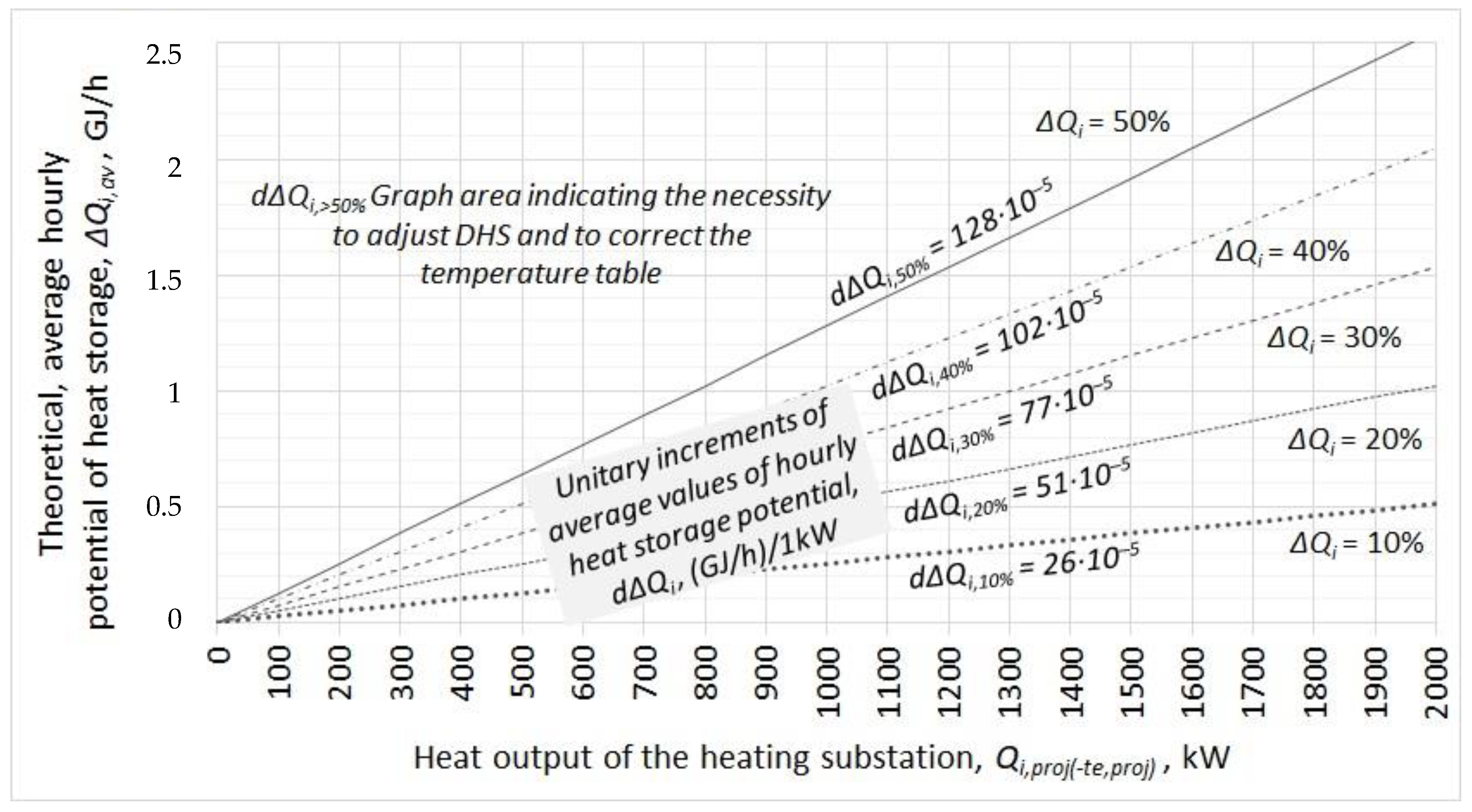
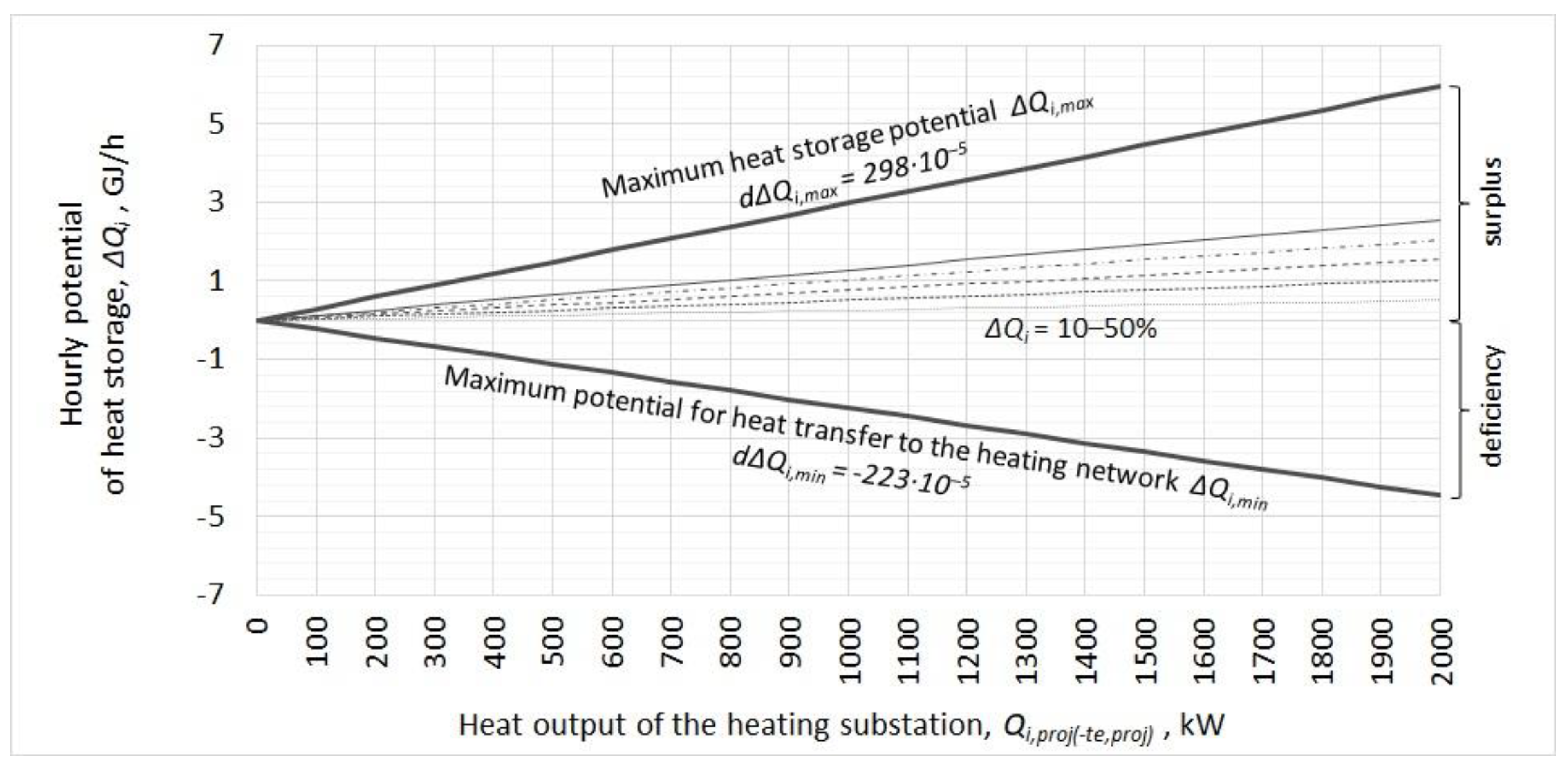
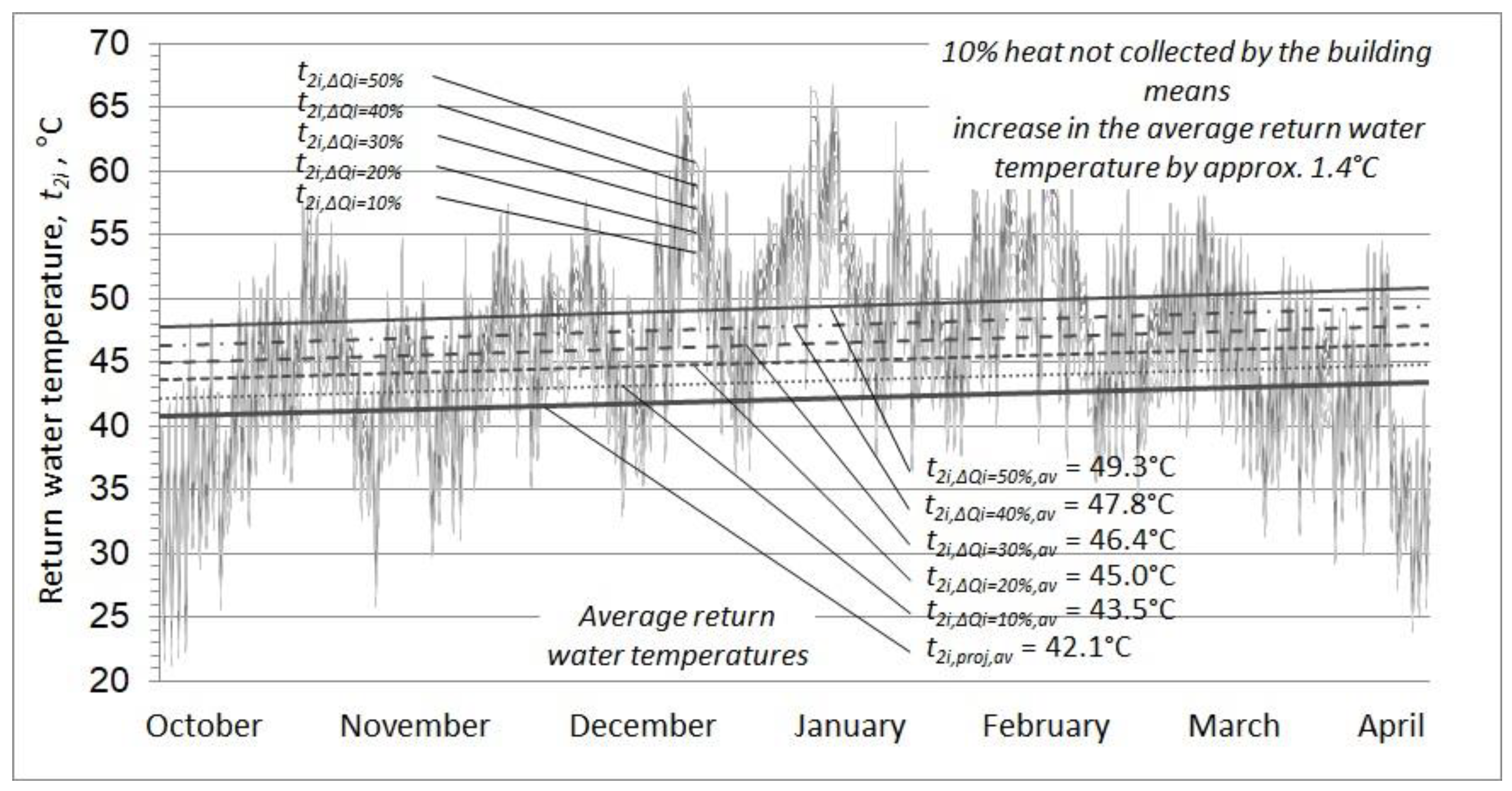
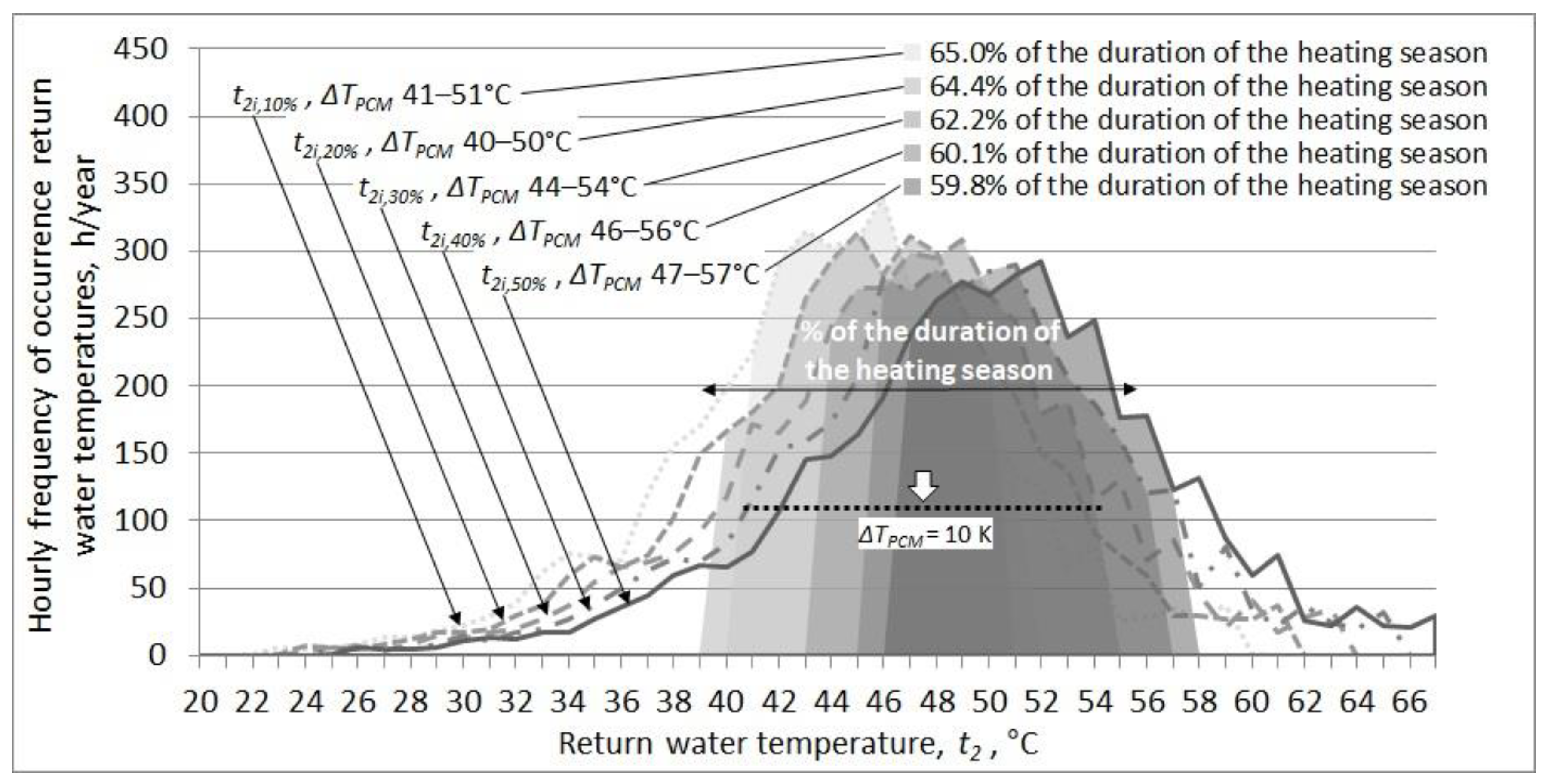
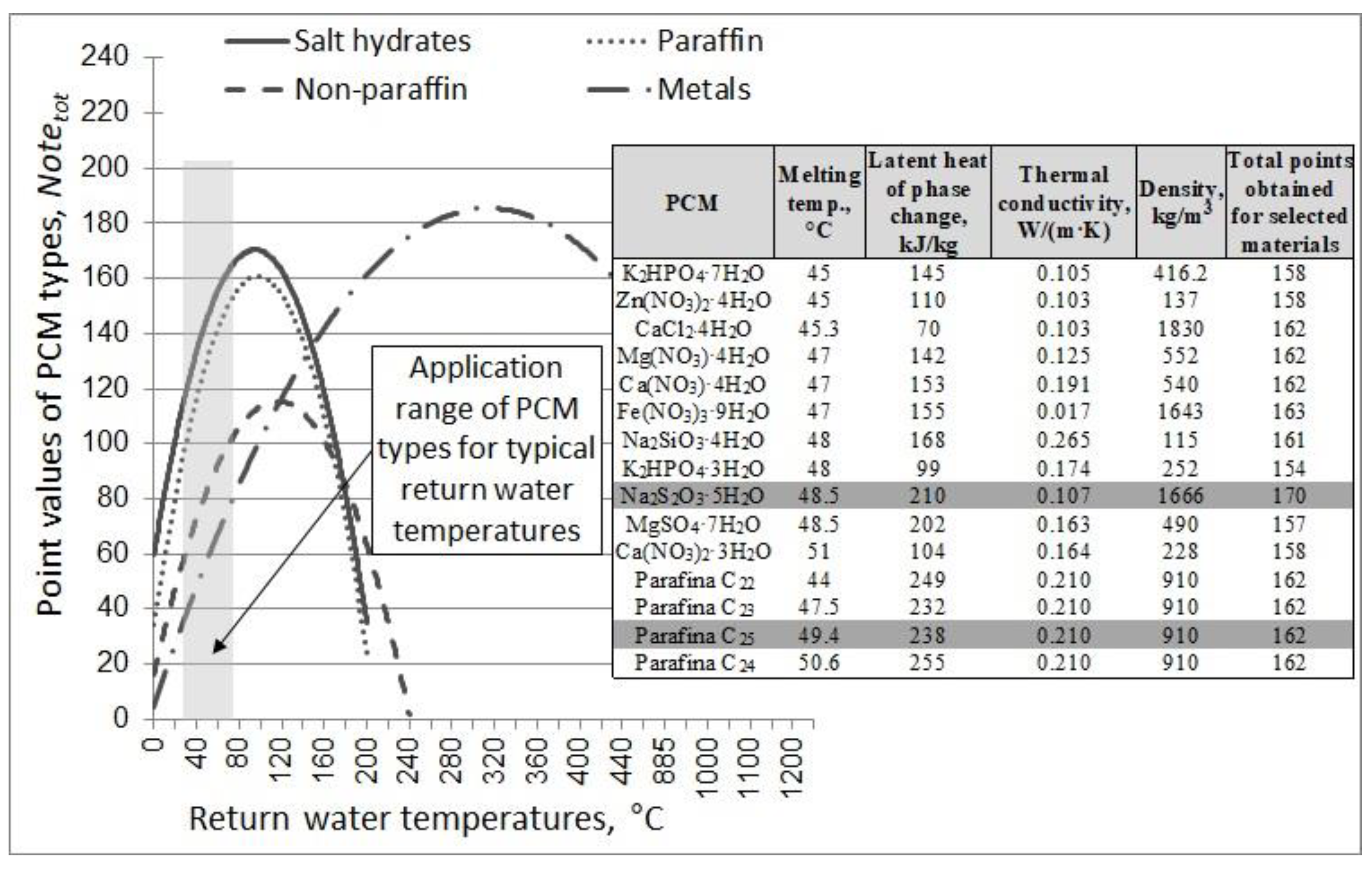
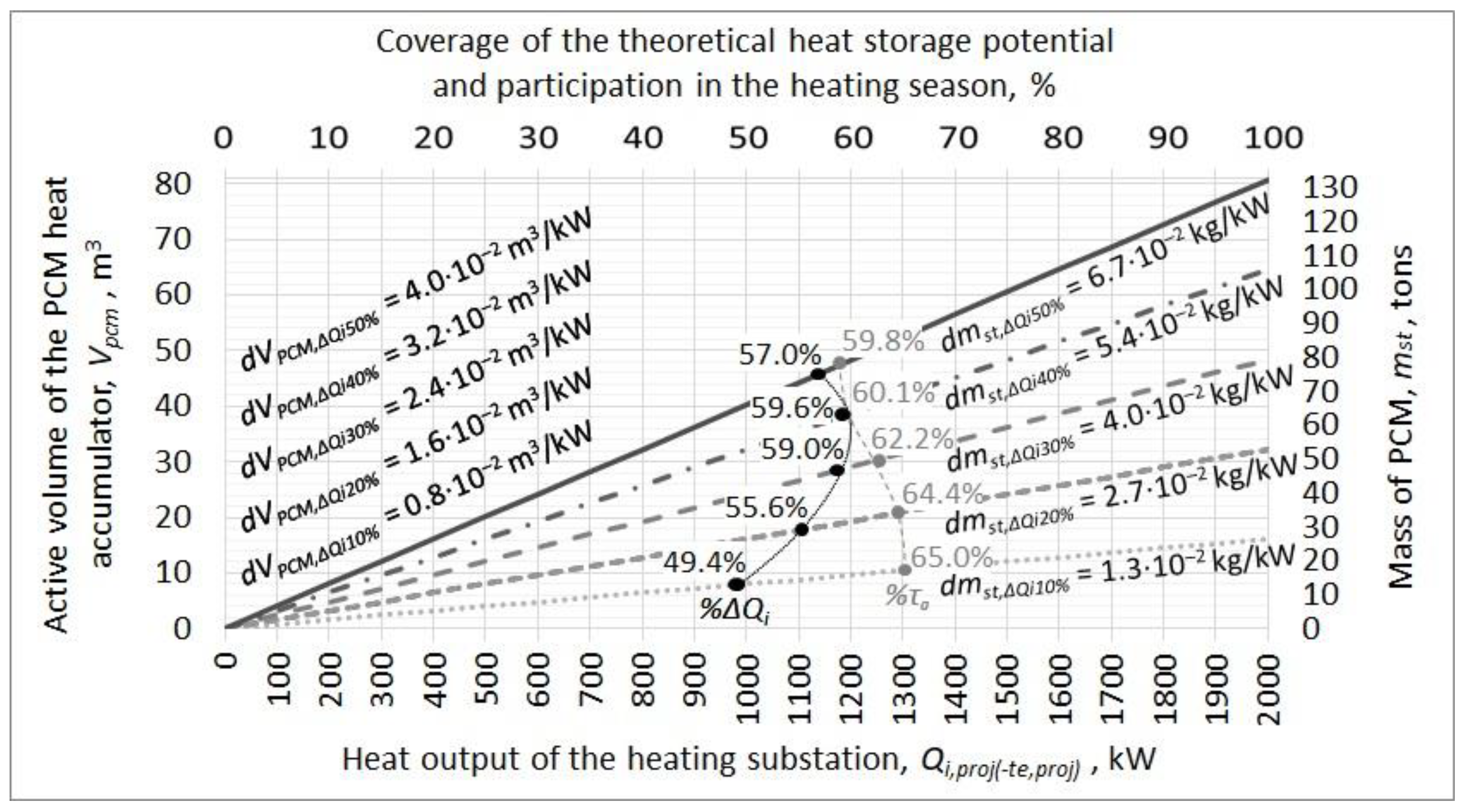
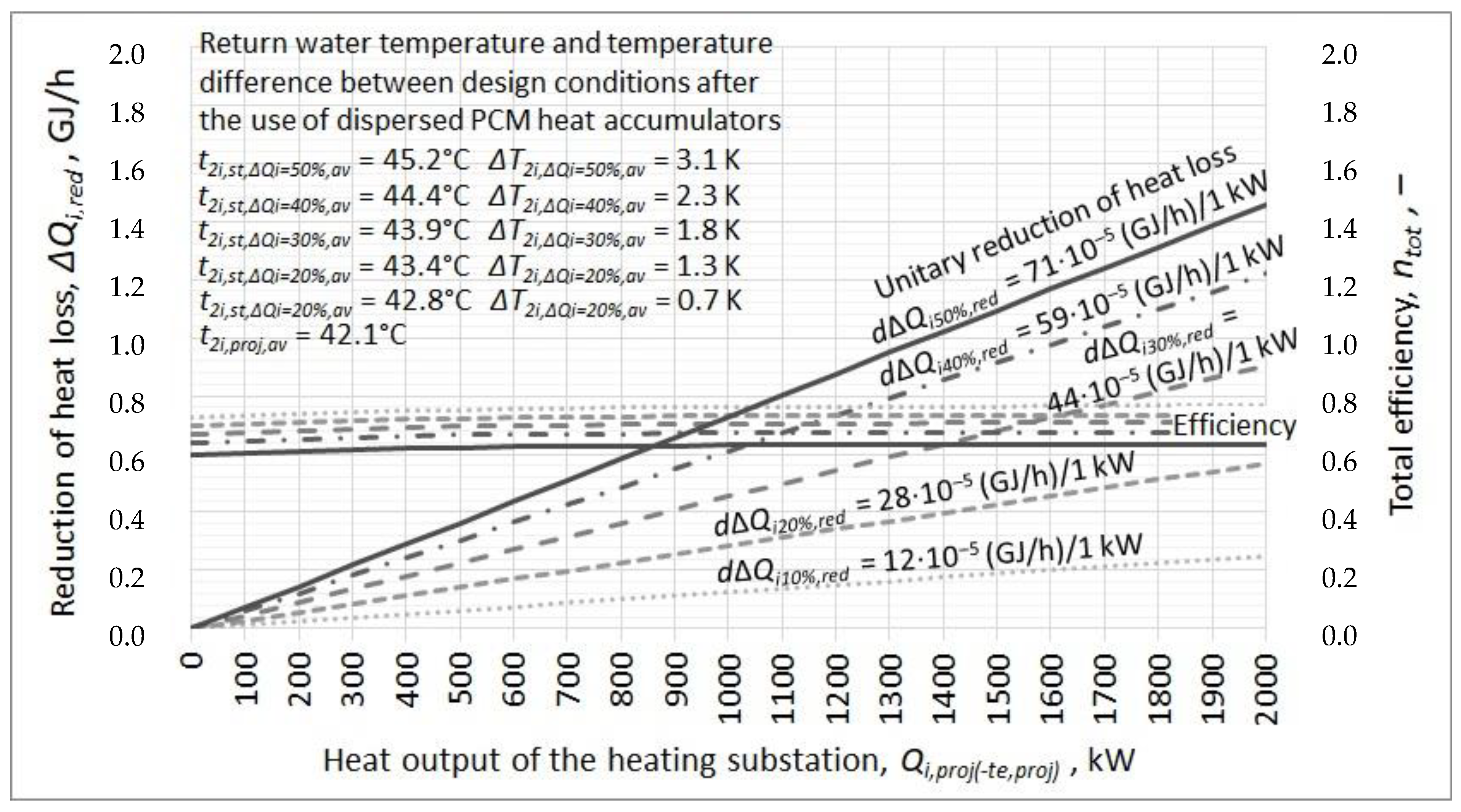
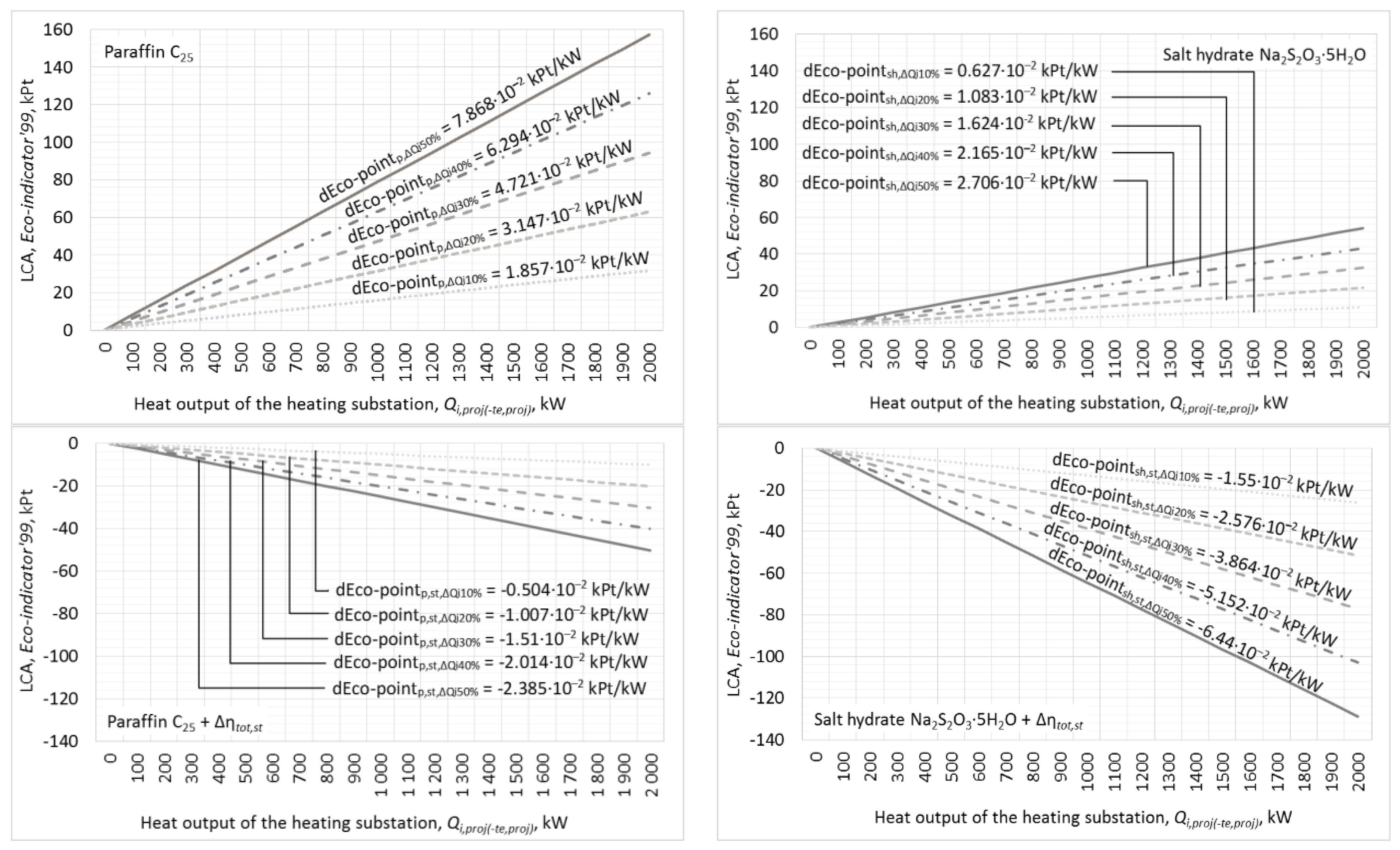
| Aspects | Nr | Criterion | Type of PCM | Weight of Criterion | Points | ||||||
|---|---|---|---|---|---|---|---|---|---|---|---|
| Type 1 | Type 2 | Type 3 | Type 4 | Type 1 | Type 2 | Type 3 | Type 4 | ||||
| C | P | nP | Sh | M | W | P | nP | Sh | M | ||
| Aspect 1–4 | 1. | C1 | C1P | C1nP | C1Sh | C1M | W1 | C1P∙W1 | C1nP∙W1 | C1Sh∙W1 | C1M∙W1 |
| 2. | C2 | C2P | C2nP | C2Sh | C2M | W2 | C2P∙W2 | C2nP∙W2 | C2Sh∙W2 | C2M∙W2 | |
| etc. | etc. | etc. | etc. | etc. | etc. | etc. | etc. | etc. | etc. | etc. | |
| n | Cn | CnP | CnnP | CnSh | CnM | Wn | CnP∙Wn | CnnP∙Wn | CnSh∙Wn | CnM∙Wn | |
| Thermal aspect Physical aspect Chemical aspect Economic aspect | Name of criterion | The best match in terms of operating parameters: 3 points The match meets the minimum requirements: 2 points The fit was possible in terms of performance, but purely theoretically 1 point | Importance of the criteria in the set of aspects: highest weight | Points were obtained on the basis of criteria: Thermal: temperature, latent heat, thermal conductivity, supercooling, and thermal stability. Physical: balance, density, volume difference, pressure, and destabilization. Chemical: compatibility with housing, toxicity, corrosion, and flammability inertness. Economic: PCM price, number of cycles of heat storage, availability, maintenance, and cost of entire installation. | |||||||
| Notetot: | ΣP | ΣnP | ΣSh | ΣM | |||||||
| Damage Categories | Impact Categories |
|---|---|
| Human Health | Carcinogenic effects on humans (Carcinogens) |
| Respiratory effects caused by organic substances (Respiratory organics) | |
| Respiratory effects caused by inorganic substances (Respiratory inorganic) | |
| Damage caused by climate change (Climate change) | |
| Effects caused by ionizing radiation (Radiation) | |
| Effects caused by ozone layer depletion (Ozone layer) | |
| Ecosystem Quality | Damage caused by ecotoxic effects (Ecotoxicity) |
| Damage caused by the combined effect of acidification and eutrophication (Acidification/Eutrophication) | |
| Damage caused by land occupation and land conversion (Land use) | |
| Resources | Damages caused by the extraction of minerals (Minerals) |
| Damages caused by the extraction of fossil fuels (Fossil fuels) |
| Outside Air Temperature te | Heat Load Factor φ | Supply Water Temperature t1i,proj | Return Water Temperature t2i,proj | Temperature Difference ΔTproj |
|---|---|---|---|---|
| °C | – | °C | °C | K |
| te ∈ 〈–te,proj; +te,proj〉 | Equation (3) | Equation (1) | Equation (2) | t1i,proj–t2i,proj |
| dΔQi,av 10% | dΔQi,av 20% | dΔQi,av 30% | dΔQi,av 40% | dΔQi,av 50% | |
|---|---|---|---|---|---|
| (GJ/m)/1 kW Heat Output | |||||
| October | 0.135 | 0.270 | 0.405 | 0.540 | 0.674 |
| November | 0.160 | 0.320 | 0.480 | 0.640 | 0.800 |
| December | 0.247 | 0.494 | 0.741 | 0.988 | 1.235 |
| January | 0.245 | 0.491 | 0.736 | 0.982 | 1.227 |
| February | 0.119 | 0.237 | 0.356 | 0.474 | 0.593 |
| March | 0.150 | 0.299 | 0.449 | 0.599 | 0.749 |
| April | 0.055 | 0.109 | 0.164 | 0.219 | 0.274 |
Publisher’s Note: MDPI stays neutral with regard to jurisdictional claims in published maps and institutional affiliations. |
© 2022 by the authors. Licensee MDPI, Basel, Switzerland. This article is an open access article distributed under the terms and conditions of the Creative Commons Attribution (CC BY) license (https://creativecommons.org/licenses/by/4.0/).
Share and Cite
Turski, M.; Jachura, A. Life Cycle Assessment of Dispersed Phase Change Material Heat Accumulators for Cooperation with Buildings in the District Heating System. Energies 2022, 15, 5771. https://doi.org/10.3390/en15165771
Turski M, Jachura A. Life Cycle Assessment of Dispersed Phase Change Material Heat Accumulators for Cooperation with Buildings in the District Heating System. Energies. 2022; 15(16):5771. https://doi.org/10.3390/en15165771
Chicago/Turabian StyleTurski, Michał, and Agnieszka Jachura. 2022. "Life Cycle Assessment of Dispersed Phase Change Material Heat Accumulators for Cooperation with Buildings in the District Heating System" Energies 15, no. 16: 5771. https://doi.org/10.3390/en15165771
APA StyleTurski, M., & Jachura, A. (2022). Life Cycle Assessment of Dispersed Phase Change Material Heat Accumulators for Cooperation with Buildings in the District Heating System. Energies, 15(16), 5771. https://doi.org/10.3390/en15165771







